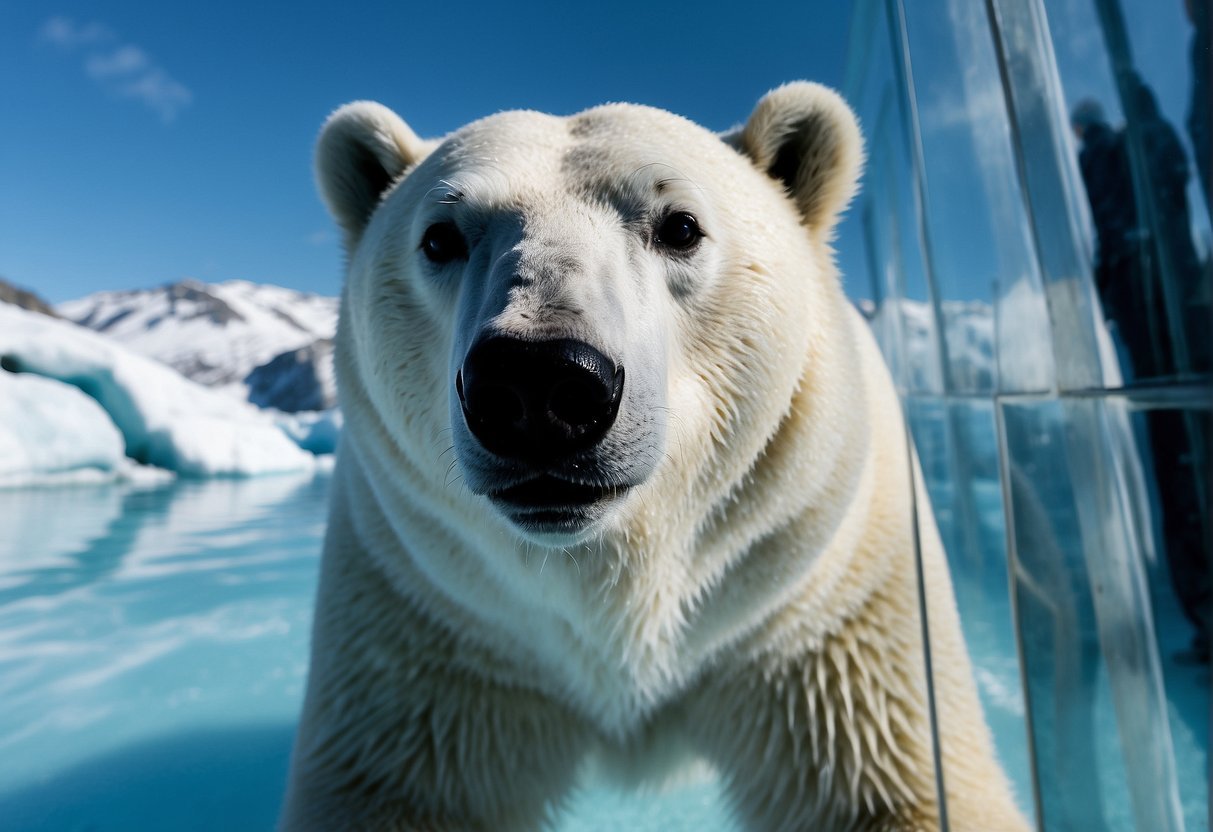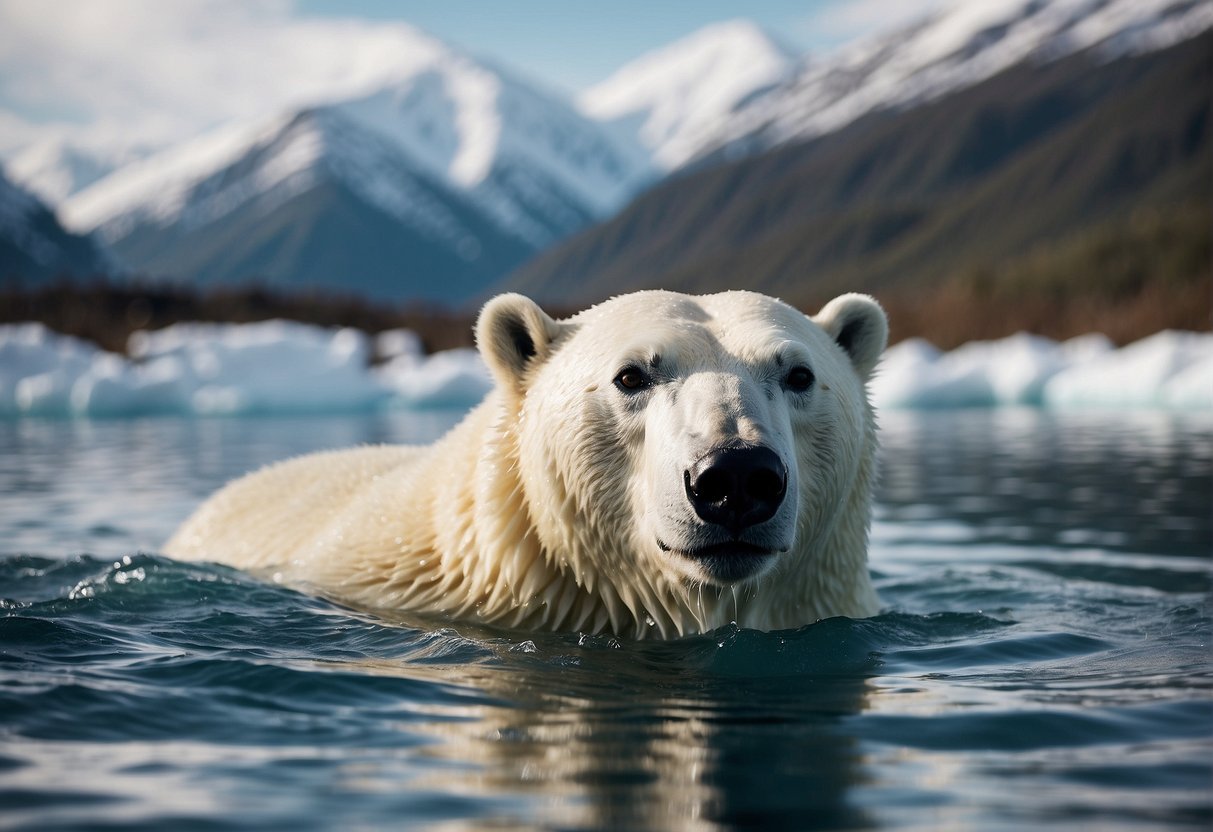美国有北极熊的动物园——寻找北极大使指南
Polar bears captivate our imaginations with their majestic presence and stark white fur—a sharp contrast against the Arctic ice. While a journey to their native habitat might be beyond reach for many, many zoos across the 美国 provide an opportunity to observe these magnificent creatures up close.
These institutions offer a glimpse into the world of polar bears and play a crucial role in their conservation and research, aiming to secure a future for the species amidst the challenges of climate change.

In these carefully crafted exhibits, zoos strive to replicate the polar bear’s natural environment, considering the complex needs of their behaviour and physiology. From large, chilled pools for swimming to expansive tundras for roaming, these habitats are designed with the animal’s health and well-being in mind.
Furthermore, they serve as educational platforms, enlightening visitors on the impact of climate change on polar bear habitats and what can be done to help preserve them. The story of the polar bear in captivity is not just for entertainment—it’s a call to conservation action.
Zoos with Polar Bears in the US – Key Takeaways
- Zoos provide a way to observe and appreciate polar bears while contributing to their preservation.
- Polar bear exhibits in zoos aim to mimic natural habitats, addressing their behavioural and physical health needs.
- Educational initiatives at these zoos raise awareness of climate change and its effects on polar bears.
Polar Bear Habitats in US Zoos

As a haven for one of nature’s most majestic arctic animals, US zoos have crafted habitats for polar bears that aim to mimic their natural environment while educating visitors on the importance of conservation.
Habitat Features and Importance
Size and Complexity: Habitats in zoos are designed to replicate the expansive and varied terrain of the Arctic, including features like large swimming areas with chilled water, rocky landscapes, and secluded dens. Polar bear enclosures must provide ample space and enrichment that encourage natural behaviours, helping to ensure their physical and mental well-being.
Conservation and Education: Zoos are not merely for observation; they are centres for education and conservation. Exhibits often integrate educational materials about climate change and its impact on polar bear habitats in the wild, aiming to inspire visitors to engage in conservation efforts.
Prominent Zoos with Polar Bears
- San Diego Zoo:
- Known for its commitment to animal care, the San Diego Zoo provides a spacious and stimulating environment for its polar bears, contributing to their wellness and public awareness.
- Columbus Zoo and Aquarium:
- The Columbus Zoo’s Polar Frontier exhibit is notable for housing Anana and Aurora, two adult female polar bears, in an award-winning habitat that aims to mirror the vastness of the tundra.
- Saint Louis Zoo:
- This zoo emphasizes the importance of sustainability and mimics a polar bear’s natural surroundings with dynamic features, which allow these arctic ambassadors to thrive.
- Brookfield Zoo, Detroit Zoo, Lincoln Park Zoo, Hogle Zoo, Henry Vilas Zoo:
- Each of these institutions has taken steps to create stimulating spaces for their polar bears, contributing to research and promoting species’ survival through partnerships with organizations like Polar Bears International.
Conservation and Research Efforts

Zoos in the United States are at the forefront of preserving polar bear populations through innovative conservation programs and research initiatives. These efforts directly impact animal welfare, aim to protect this vulnerable species amidst climate change, and strive to maintain genetic diversity per the International Union for Conservation of Nature (IUCN) guidance.
Captive Breeding Programs
Captive breeding programs are crucial for increasing the number of polar bears, considered vulnerable species. Zoos coordinate to ensure genetic diversity is considered, thereby strengthening the genetic pool of the bears in captivity. This effort is essential for the species’ long-term viability and resilience.
Polar Bear Health Monitoring
Continuous health monitoring is vital to ensure the well-being of polar bears in zoos. Scientists conduct thorough research to understand their nutritional needs, reproductive health, and overall physiology. Efforts such as a pregnancy test for polar bears help in close monitoring and contribute to the broader knowledge needed to support both captive and wild populations.
Public Education and Awareness
Educational programs aim to raise awareness about the plight of polar bears due to climate change and its effects on Arctic wildlife. By interacting with these magnificent creatures, visitors can learn about their challenges and the global efforts needed for their conservation. Engaging displays and direct scientist involvement educate the public on how they can contribute to polar bear conservation.
Polar Bear Behavior and Physiology
When you set foot in a zoo that houses polar bears, you’re observing more than just another animal on display; you are witnessing a marvel of adaptation and survival. Polar bear’s physiology and behaviour in captivity reflect their life in the wild, providing insights into their diet, nutrition, and well-being.
Diet and Nutrition in Zoos
In captivity, polar bear nutrition is meticulously monitored to mimic their wild diet, primarily consisting of seals they hunt on the sea ice. Zoos provide a diet rich in fats and proteins through fish and meat, ensuring the bears maintain the thick layer of fat necessary for insulation and energy reserves. Careful feeding practices support their health, mirroring the behaviour 和 nutrition they seek in their Arctic habitat.
- Preferred Foods in Captivity:
- Fish (e.g., salmon, herring)
- Marine mammal meat
- Supplemental vitamins and minerals
Physical and Mental Well-being
这 福利 of polar bears in zoos centres around replicating the physical and mental stimulation of their natural environment. Zoos invest in significant habitats with pools for 游泳—a crucial activity as polar bears are adept swimmers in the wild known for their long-distance dives. Mental stimulation through enrichment activities mimics the behaviour of hunting and patrolling sea ice in the wild.
- Enrichment Activities Include:
- Scent trails
- Puzzle feeders
- Habitat changes to encourage exploration
By understanding the complex relationship between a polar bear’s behaviour, diet, and overall 福利, you can appreciate the significant efforts made by zoos to replicate an environment that maintains the 人口 in captivity as ambassadors for their species battling the effects of climate change on sea ice in the wild.






